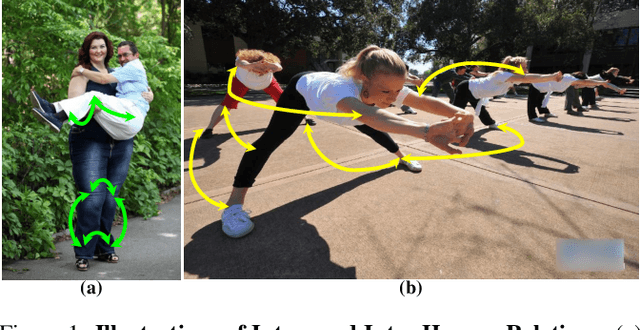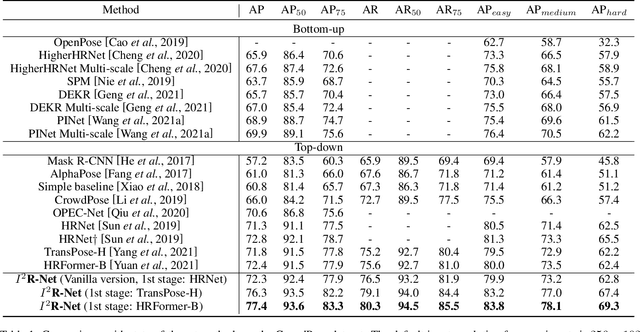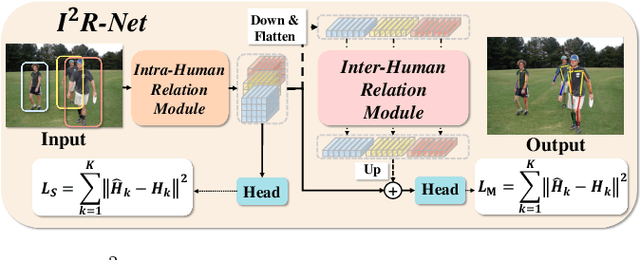Wenjin Deng
Step-Audio: Unified Understanding and Generation in Intelligent Speech Interaction
Feb 18, 2025Abstract:Real-time speech interaction, serving as a fundamental interface for human-machine collaboration, holds immense potential. However, current open-source models face limitations such as high costs in voice data collection, weakness in dynamic control, and limited intelligence. To address these challenges, this paper introduces Step-Audio, the first production-ready open-source solution. Key contributions include: 1) a 130B-parameter unified speech-text multi-modal model that achieves unified understanding and generation, with the Step-Audio-Chat version open-sourced; 2) a generative speech data engine that establishes an affordable voice cloning framework and produces the open-sourced lightweight Step-Audio-TTS-3B model through distillation; 3) an instruction-driven fine control system enabling dynamic adjustments across dialects, emotions, singing, and RAP; 4) an enhanced cognitive architecture augmented with tool calling and role-playing abilities to manage complex tasks effectively. Based on our new StepEval-Audio-360 evaluation benchmark, Step-Audio achieves state-of-the-art performance in human evaluations, especially in terms of instruction following. On open-source benchmarks like LLaMA Question, shows 9.3% average performance improvement, demonstrating our commitment to advancing the development of open-source multi-modal language technologies. Our code and models are available at https://github.com/stepfun-ai/Step-Audio.
MusicFace: Music-driven Expressive Singing Face Synthesis
Mar 24, 2023Abstract:It is still an interesting and challenging problem to synthesize a vivid and realistic singing face driven by music signal. In this paper, we present a method for this task with natural motions of the lip, facial expression, head pose, and eye states. Due to the coupling of the mixed information of human voice and background music in common signals of music audio, we design a decouple-and-fuse strategy to tackle the challenge. We first decompose the input music audio into human voice stream and background music stream. Due to the implicit and complicated correlation between the two-stream input signals and the dynamics of the facial expressions, head motions and eye states, we model their relationship with an attention scheme, where the effects of the two streams are fused seamlessly. Furthermore, to improve the expressiveness of the generated results, we propose to decompose head movements generation into speed generation and direction generation, and decompose eye states generation into the short-time eye blinking generation and the long-time eye closing generation to model them separately. We also build a novel SingingFace Dataset to support the training and evaluation of this task, and to facilitate future works on this topic. Extensive experiments and user study show that our proposed method is capable of synthesizing vivid singing face, which is better than state-of-the-art methods qualitatively and quantitatively.
DINet: Deformation Inpainting Network for Realistic Face Visually Dubbing on High Resolution Video
Mar 07, 2023



Abstract:For few-shot learning, it is still a critical challenge to realize photo-realistic face visually dubbing on high-resolution videos. Previous works fail to generate high-fidelity dubbing results. To address the above problem, this paper proposes a Deformation Inpainting Network (DINet) for high-resolution face visually dubbing. Different from previous works relying on multiple up-sample layers to directly generate pixels from latent embeddings, DINet performs spatial deformation on feature maps of reference images to better preserve high-frequency textural details. Specifically, DINet consists of one deformation part and one inpainting part. In the first part, five reference facial images adaptively perform spatial deformation to create deformed feature maps encoding mouth shapes at each frame, in order to align with the input driving audio and also the head poses of the input source images. In the second part, to produce face visually dubbing, a feature decoder is responsible for adaptively incorporating mouth movements from the deformed feature maps and other attributes (i.e., head pose and upper facial expression) from the source feature maps together. Finally, DINet achieves face visually dubbing with rich textural details. We conduct qualitative and quantitative comparisons to validate our DINet on high-resolution videos. The experimental results show that our method outperforms state-of-the-art works.
I^2R-Net: Intra- and Inter-Human Relation Network for Multi-Person Pose Estimation
Jun 27, 2022



Abstract:In this paper, we present the Intra- and Inter-Human Relation Networks (I^2R-Net) for Multi-Person Pose Estimation. It involves two basic modules. First, the Intra-Human Relation Module operates on a single person and aims to capture Intra-Human dependencies. Second, the Inter-Human Relation Module considers the relation between multiple instances and focuses on capturing Inter-Human interactions. The Inter-Human Relation Module can be designed very lightweight by reducing the resolution of feature map, yet learn useful relation information to significantly boost the performance of the Intra-Human Relation Module. Even without bells and whistles, our method can compete or outperform current competition winners. We conduct extensive experiments on COCO, CrowdPose, and OCHuman datasets. The results demonstrate that the proposed model surpasses all the state-of-the-art methods. Concretely, the proposed method achieves 77.4% AP on CrowPose dataset and 67.8% AP on OCHuman dataset respectively, outperforming existing methods by a large margin. Additionally, the ablation study and visualization analysis also prove the effectiveness of our model.
 Add to Chrome
Add to Chrome Add to Firefox
Add to Firefox Add to Edge
Add to Edge